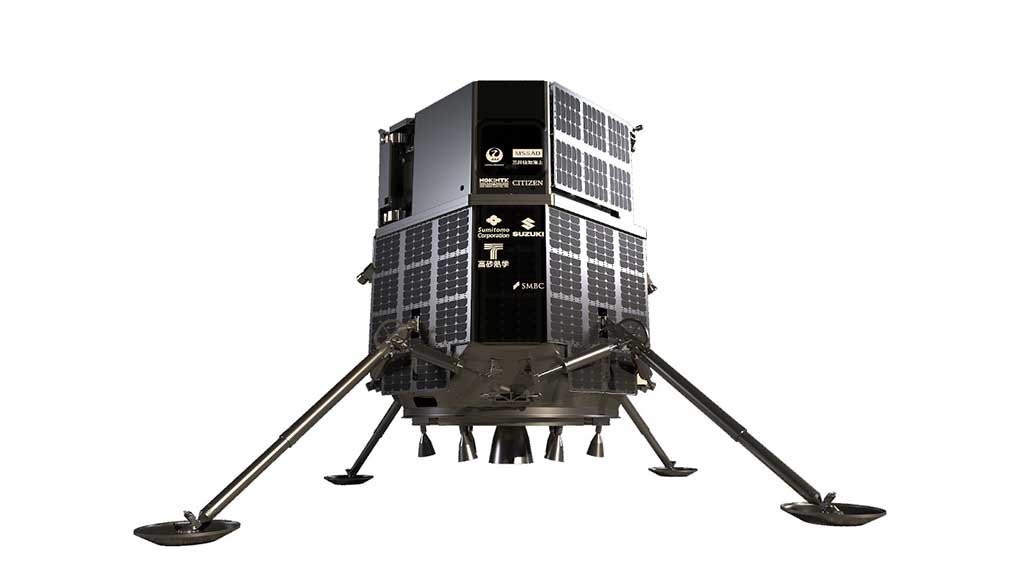Failed Emirates lunar landing mission not a complete loss
The Emirates Lunar Mission, which would have seen the deployment of the United Arab Emirates- (UAE-) developed Rashid rover on the moon’s surface, has failed.
Private Japanese space exploration company iSpace was unable to establish communication with its Hakuto-R Mission 1 (M1) lander – which carried the Rashid rover as its primary payload – during its attempted landing on the moon's surface at about 18:40 on April 25.
The Hakuto-R M1 would have been the first commercial spacecraft to land on the lunar surface and carried the Mohammed Bin Rashid Space Centre’s Rashid (MBRSC) rover as a payload.
The South African National Space Agency (Sansa) was tasked with establishing communication with the Rashid rover as it arrived on the lunar surface from the Sansa Hartebeeshoek ground station.
Sansa was, on April 25, standing by to establish a communications link with the Rashid rover from two antennae to track and communicate with the spacecraft. Sansa’s own 12 m S-band antenna for uplink transmissions and the South African Radio Astronomy Observatory’s (SARAO’s) 26-m parabolic antenna would have been commissioned for downlink transmissions.
Based on the currently available data, the Hakuto-R M1 mission control centre in Nihonbashi, Tokyo, Japan, confirmed that the lander was in a vertical position as it carried out the final approach to the lunar surface. Shortly after the scheduled landing time, however, no data was received indicating a touchdown.
iSpace engineers monitored the estimated remaining propellant reached at the lower threshold and noted that, shortly afterward, the descent speed rapidly increased. After that, the communication loss happened.
Based on this information, it has been determined that there is a high probability that the lander crashed after the engines cut out from a lack of fuel.
To find the root cause of this situation, iSpace engineers are working on a detailed analysis of the telemetry data acquired up until the end of the landing sequence and will clarify the details after completing the analysis.
“It is important to temper expectations when it comes to moon missions. Getting to the moon is not easy,” Sansa chief engineer Eugene Avenant said after the failure occurred.
He noted that there are plenty of space exploration missions planned for the next few years – all of which will need to communicate with the earth and might still require Sansa’s help as a world-class provider of telemetry, tracking and mission control services from its Hartebeeshoek ground station.
Despite the failed landing, many aspects of the mission up until that point were deemed a success.
iSpace said it would continue to make the most of the data gathered and the know-how acquired during the operation. The company said it aimed use the lessons learned to dramatically improve the technological maturity of Mission 2 in 2024 and Mission 3 in 2025.
“Although we do not expect to complete the lunar landing at this time, we believe that we have fully accomplished the significance of this mission, having acquired a great deal of data and experience by being able to execute the landing phase.
“What is important is to feed this knowledge and learning back to Mission 2 and beyond so that we can make the most of this experience,” iSpace founder and CEO Takeshi Hakamada said.
iSpace is already developing Mission 2 and Mission 3 concurrently and have prepared a foundation that can maintain this continuity, he added.
iSpace is the first private company to attempt to land on the moon, with the MBRSC rover being the first mission to the lunar surface by an Arab country.
Sansa said it too was ready and willing to support any future moon missions.
Comments
Press Office
Announcements
What's On
Subscribe to improve your user experience...
Option 1 (equivalent of R125 a month):
Receive a weekly copy of Creamer Media's Engineering News & Mining Weekly magazine
(print copy for those in South Africa and e-magazine for those outside of South Africa)
Receive daily email newsletters
Access to full search results
Access archive of magazine back copies
Access to Projects in Progress
Access to ONE Research Report of your choice in PDF format
Option 2 (equivalent of R375 a month):
All benefits from Option 1
PLUS
Access to Creamer Media's Research Channel Africa for ALL Research Reports, in PDF format, on various industrial and mining sectors
including Electricity; Water; Energy Transition; Hydrogen; Roads, Rail and Ports; Coal; Gold; Platinum; Battery Metals; etc.
Already a subscriber?
Forgotten your password?
Receive weekly copy of Creamer Media's Engineering News & Mining Weekly magazine (print copy for those in South Africa and e-magazine for those outside of South Africa)
➕
Recieve daily email newsletters
➕
Access to full search results
➕
Access archive of magazine back copies
➕
Access to Projects in Progress
➕
Access to ONE Research Report of your choice in PDF format
RESEARCH CHANNEL AFRICA
R4500 (equivalent of R375 a month)
SUBSCRIBEAll benefits from Option 1
➕
Access to Creamer Media's Research Channel Africa for ALL Research Reports on various industrial and mining sectors, in PDF format, including on:
Electricity
➕
Water
➕
Energy Transition
➕
Hydrogen
➕
Roads, Rail and Ports
➕
Coal
➕
Gold
➕
Platinum
➕
Battery Metals
➕
etc.
Receive all benefits from Option 1 or Option 2 delivered to numerous people at your company
➕
Multiple User names and Passwords for simultaneous log-ins
➕
Intranet integration access to all in your organisation





















